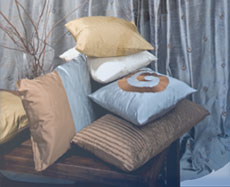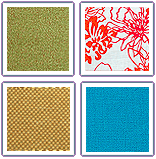 |
 |

MAY 21-24,2023 January 22 - 25,2017 MARCH 8-9,2017 Catania Silks
15510 Minnesota Avenue Paramount, CA 90723 Site by OC WEBFIRM
|
 |
  

|
In Roman times, silk fabric was so desirable that traders would bring it from China to Europe across Asia along a route known as the Silk Road. In Europe people would attach pieces of silk fabric to their clothes, like jewelry, as it was more expensive than gold. Silk may have been discovered even earlier in China, as some silk fragments have been dated to before 3000 B.C. For a long time China was the only country which produced silk fabrics. China kept secret the technique of making silk for centuries. Anyone caught trying to smuggle the secret out of China was severely punished or even executed. Chinese immigrants are said to have brought silk worms to Korea around 200 BC. And, around 550 AD, two Nestorian monks brought silkworm eggs to the court of Emperor Justinian in Rome by hiding them in their hollowed staffs. At the bottom of all this intrigue and beauty is a small moth of the Lepidoptera order belonging to the Bombycidae family. One species of this moth, the Bombyx Mori, is responsible for the vast majority of the silk currently produced and is cultivated under controlled conditions in silk farms or factories. This blind, flightless moth lays about 500 tiny eggs at a time. Once hatched, the Bombyx Mori worms are placed on a bed of mulberry leaves and each worm devours about 30,000 times its weight and grows from about a quarter an inch to about 3 inches in 30 to 45 days. The mature worm then spins its cocoon. The cocoon is made up of one continuous strand of silk filament 700 to 1000 yards long. The filament, spit out from two spores on top of the worm’s head, is coated with sericin, a glue-like substance to hold the threads together to form a cocoon. The process of cultivating the silkworms to produce silk is called sericulture, from serica, the Greek word for silk There are also undomesticated silk worms, like the tussah, which are found in the wild and come mostly from India. The color and quality of silk from these worms, called raw silk, depends on what they feed on. Normally, the silk from these worms are more yellow and less strong. To start production, the cocoon is moistened to loosen the filament. The filament is thinner than hair but very strong. Any fabric woven with a single strand of silk filament will be very sheer and see-through. Usually, five to eight filaments of silk yarn are reeled together on a spool to increase the thickness of the strand. Several strands of silk are then twisted together, in a process called throwing, to make yarn for weaving. The gummy substance, sericin, is then removed by boiling the silk in soap and water, leaving it soft and lustrous. The sericin may also be removed after the fabric is woven. In India, they beat woven raw silk with sticks to remove serinin and make the silk soft. The yarn is then twisted and separated into warp and weft yarns and rolled into hanks. The warp yarn has more twists than the weft yarn as it needs to be stronger. The yarn is ready to be bleached and/or dyed and made ready for weaving. Initially woven on handlooms, the silk yarn is strong enough to be woven on the latest shuttle-less looms. Silk resists mildew and damage by moths. It is non-flammable, though not fire- retardant. Silk can absorb moisture but loses some of its strength. Therefore, it is best dry-cleaned. All these qualities make it a highly desired fabric for elegant dresses and home décor. |